In January 2023, several bright fireballs were observed over the United Kingdom (and neighbouring countries), especially on January, 09th (Event #2023-23, with more than 600 reports), 13th (Event #2023-213, with over 12 reports), 21st (Event #2023-406, with nearly 100 reports) and 24th (Event #2023-473 with more than 210 reports). Which is nearly 1 000 British reports for the first month of the year!
If you witnessed one of these events and/or if you have a video or a photo of one of these events, please
Submit an Official Fireball Report
If you want to learn more about Fireballs: read our Fireball FAQ.
January 9th, 20h 01min UT fireball
First fireball of the month was the most widely observed. On January 9th, at 20h 01min UT, this medium bright (magnitude estimated to -3.2) but slow sporadic meteor (Event #2023-23) was reported by more than 600 persons from England, but also Wales, France, Belgium and the Netherlands (Figure 1), along with 12 videos and 3 photographies.
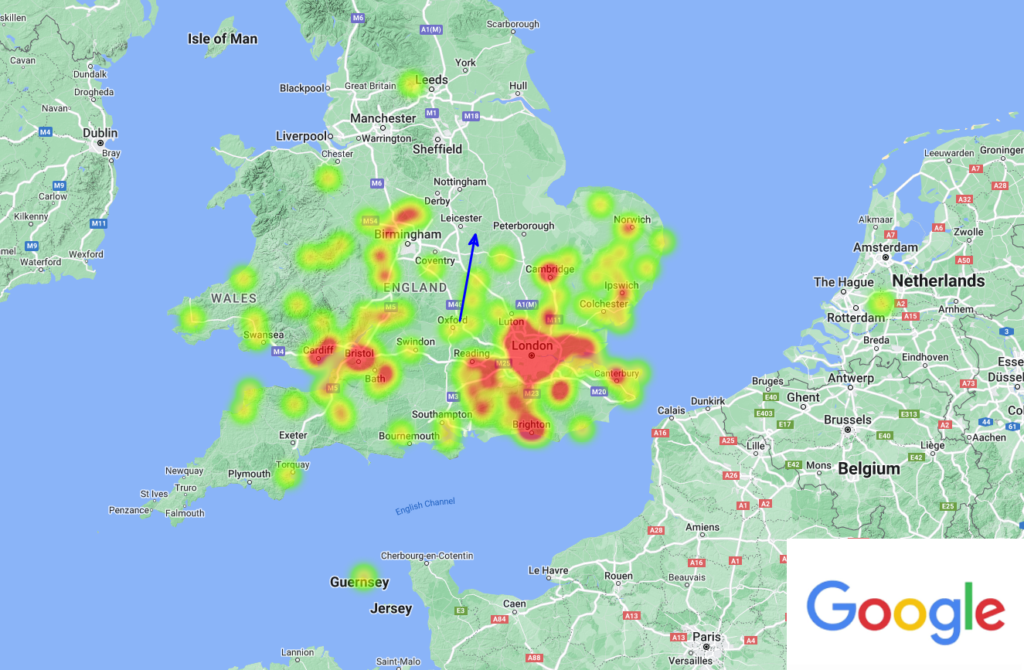
UKMon (UK Meteor Network) recorded the meteor with 6 video stations (Figures 2a to 2d) and calculations estimates its magnitude to have reached -3.2. According to video analysis, this fireball was a sporadic which entered the atmosphere at a 15 km/s speed, 90 km above a position 12 km East of Salisbury (Wiltshire). The meteoroid, which came from outer regions of the asteroid belt (between Mars and Jupiter) then travelled North with a 11° azimuth to end its 150 km path at a 35 km altitude, 20 km East of Coventry (West Midlands).
January 13th, 02h 15min UT fireball
Second bright fireball of the month (Event #2023-213) was less observed, probably because of its appearance time, with only 13 reports althought its magnitude, estimated to be -6, was equivalent to the previous one. But the time of this meteoric event that occured on January 13th, at 02h 15min UT, and the flaring and short aspect of the meteor are probably factors explaining the lack of reports that were only issued from England.
UKMon (UK Meteor Network) recorded the meteor with 3 video stations (Figure 4a and 4b) and calculations estimates its magnitude to have reached -6.7. According to video analysis, this fireball was a sporadic which entered the atmosphere at a 19 km/s speed with a 85° entry angle, which is nearly vertical. Which explains the short horizontal projected path over the ground, and the low geographical extension of witnesses. The meteoroid, which came from very inner regions of the asteroid belt (between Mars and Jupiter) entered the atmosphere a few kilometers North of Wincanton (Somerset) (it appeared while it was 90 km high) and travelled near vertical but slightly East (90° azimuth) to end at a 30 km altitude, 5.5 km East from the originating point.
January 21st, 20h 31min UT fireball
Third reported fireball was reported by more than 100 persons (Event #2023-406) and was observed from Southern Great Britain and Ireland (Figure 4), but it was not considered a fireball by UKMon, and did not appear in the 10 brightest events of the month. Calculations made from visual reports indicates the fireball must have travelled from West to East above the Irish Sea, 20 km South of the Isle of Man and 40 km West of Blackpool (Lancashire).
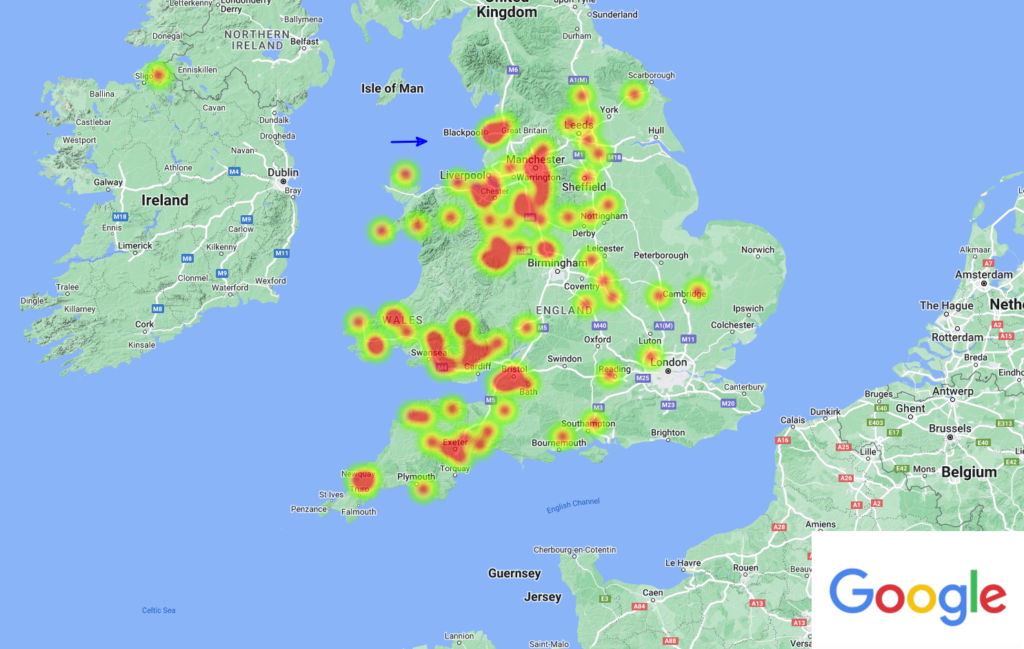
January 24th, 06h 54min UT fireball
Last bright fireball of the month (Event #2023-473) was the second brightest, with -6.2 recorded magnitude (UKMON), and more than 200 people reporting it from England, Scotland and Wales (Figure 5). It occured on January 24th, 06h 54min UT and was also spotted by 3 FRIPON cameras.
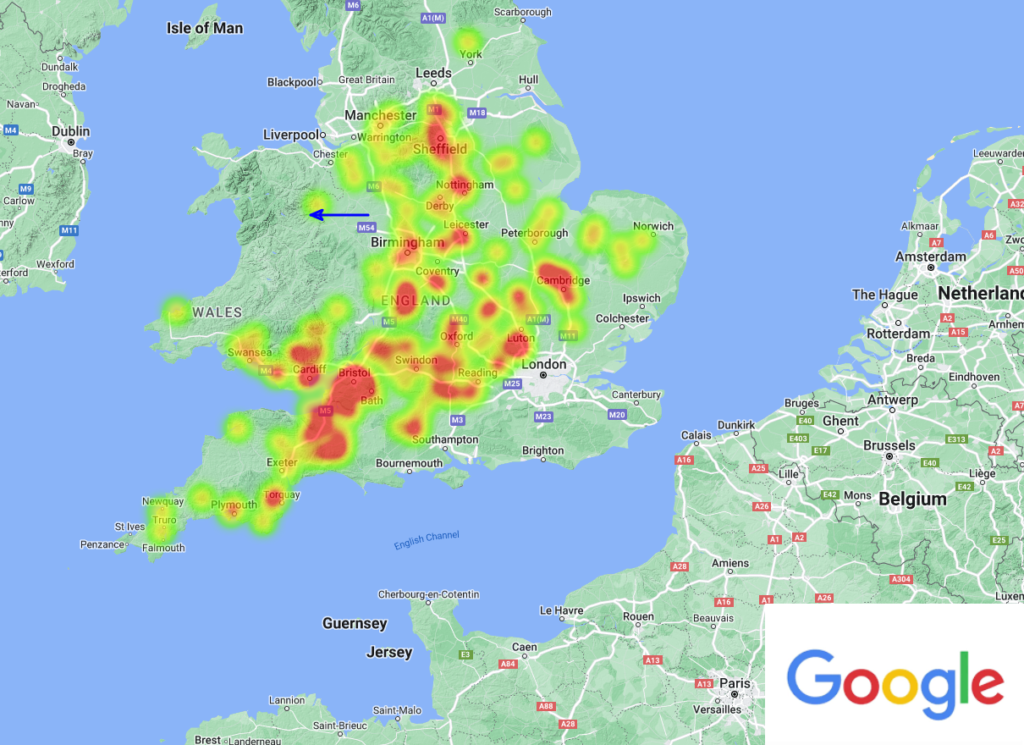
UKMon (UK Meteor Network) recorded the meteor with 6 video stations (Figure 6a and 6b) and calculations estimates its magnitude to have reached -6.2. According to video analysis, this fireball was a sporadic which entered the atmosphere at a 18 km/s speed. The meteoroid, which travelled inside Mars orbit, became visible while it was 80 km high over Southern Telford (Shropshire) and headed West (180° azimuth) to disappear 40 km from here, while it was 42 km altitude over Brockton (Shropshire).
Fireball, Bolide?
Several thousand meteors of fireball magnitude occur in the Earth’s atmosphere each day. The vast majority of these, however, occur over the oceans and uninhabited regions, and a good many are masked by daylight. Those that occur at night also stand little chance of being detected due to the relatively low numbers of persons out to notice them.
Additionally, the brighter the fireball, the more rare is the event. As a general thumb rule, there are only about 1/3 as many fireballs present for each successively brighter magnitude class, following an exponential decrease. Experienced observers can expect to see only about one fireball of magnitude -6 (crescent moon) or better for every 200 hours of meteor observing, while a fireball of magnitude -4 (Venus) can be expected about once every 20 hours or so.
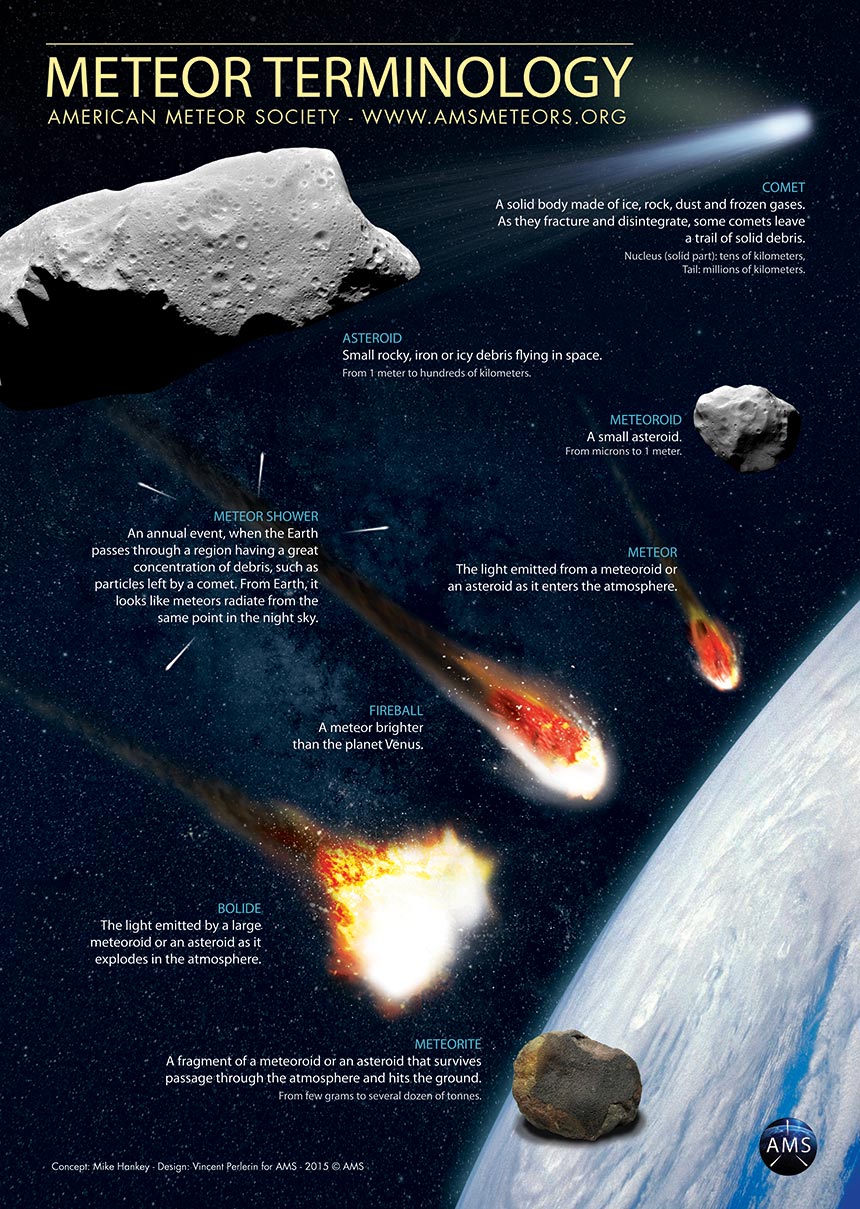


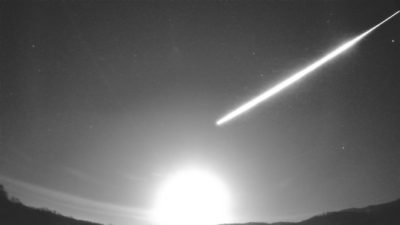
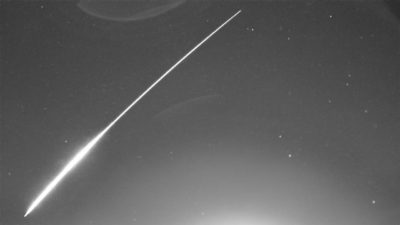
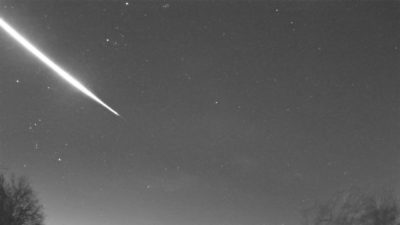
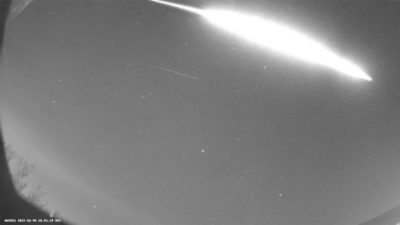
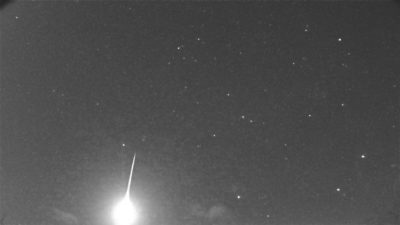
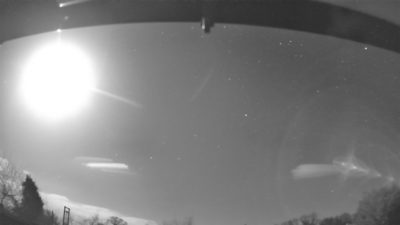
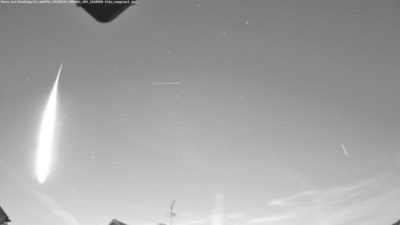
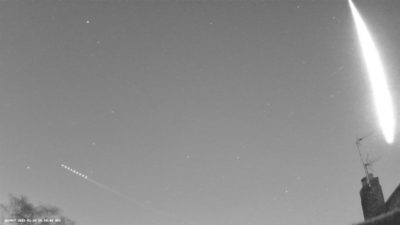


 You saw something bright and fast? Like a huge shooting star? Report it: it may be a fireball.
You saw something bright and fast? Like a huge shooting star? Report it: it may be a fireball.  You counted meteors last night? Share your results with us!
You counted meteors last night? Share your results with us!  You took a photo of a meteor or fireball? You have a screenshot of your cam? Share it with us!
You took a photo of a meteor or fireball? You have a screenshot of your cam? Share it with us!  You caught a meteor or fireball on video? Share your video with us!
You caught a meteor or fireball on video? Share your video with us!